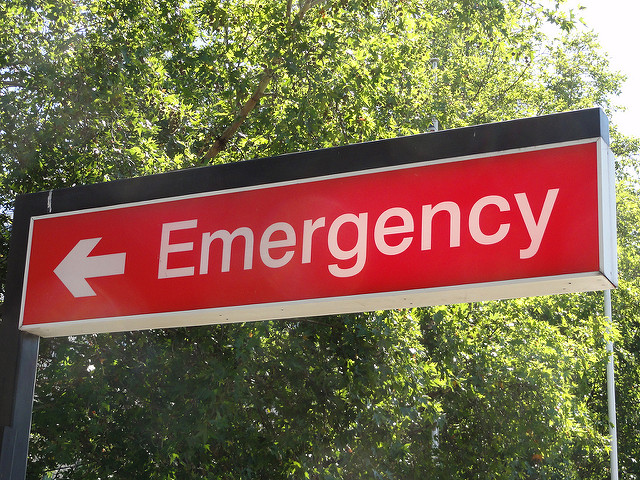A new study by Zack Cooper and Fiona Scott Morton in the New England Journal of Medicine reveals that more than one in five emergency room visits involve out-of-network care. While most people choose emergency rooms at their in-network hospital, hospitals can and do often contract with emergency room (ER) doctors who are not in the hospitals’ insurance network.
The problem of patients being forced to use out-of-network ER doctors is more serious in some parts of the country than in others. In McAllen, Texas, nearly nine of ten emergency department (ED) visits at in-network hospitals involved out-of-network ER doctors. In St. Petersburg, Florida, more than six in ten ED visits involved out-of-network doctors. But, in Boulder, Colorado and South Bend, Indiana, virtually everyone who visited an in-network hospital for emergency services received treatment by an in-network ER doctor.
The cost to the 22 percent of patients who received bills from out-of-network doctors when they sought ER care was substantial. As it is, emergency room charges for in-network care are on average almost three times Medicare’s standard rate. But, out-of-network costs average eight times Medicare’s rate for services.
If the patients’ insurers paid the in-network cost and left it to the patient to pay the difference, on average, patients would be expected to pay $622.55 for their ER care. That said, the costs can be far higher. The researchers found that out-of-pocket costs for one patient they studied was $19.603.30.
What can patients do? Whatever your out-of-pocket costs, you should appeal to your health plans to pay them. If you followed the health plans’ rules and sought in-network emergency care, the health plan should pick up the additional costs. After all, you had no control over the doctors who treated you.
The federal government has yet to address this enormous problem facing people seeking emergency department care in their health plan’s in-network hospital. Some states have passed laws holding the patient harmless for the additional costs imposed by out-of-network doctors and requiring the health plans to pay the difference. Of course, that rewards out-of-network doctors who charge exorbitant rates and ultimately drives up premiums for people in the health plans.
New York requires insurers and out-of-network doctors to go through a mediation process to arrive at a fair rate.
The best solution would be for Medicare rates or Medicare plus-a-small-percentage rates to apply to all providers, regardless of the health plan. It would help bring down costs for out-of-network care as well as in-network care. Health plans are hard-pressed to rein in costs. And, patients are not able to shop around for nonelective services, such as emergency care.
Expanding Medicare to everyone in the U.S. is the easiest way to ensure fair provider rates, while giving people the choice of a plan that gives them access to their doctors and hospitals and the continuity of care they value.
Here are more posts from Just Care:










